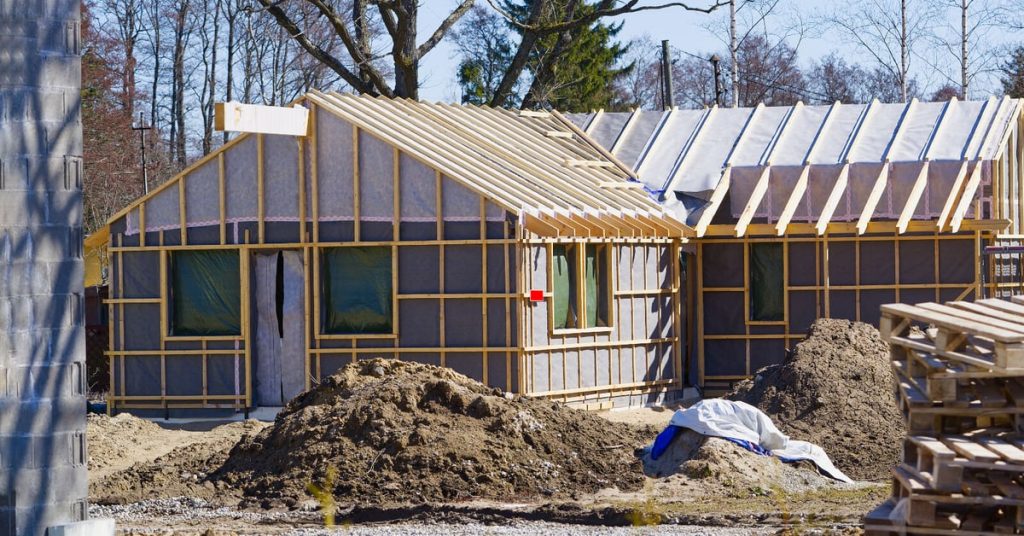
Discover how prefabricated houses are revolutionizing the home-building industry with their efficiency, cost-effectiveness, and sustainability.
Prefabricated houses, commonly known as modular or factory-built homes, are increasingly gaining traction as a viable alternative to traditional site-built homes. These homes are constructed in controlled environments, often leading to more efficient use of materials, better quality control, and reduced waste. As housing demands continue to rise in various urban landscapes, especially in the United States, prefabricated houses offer innovative solutions to provide housing quickly and sustainably.
Recent trends reflect a growing interest in prefabricated homes due to their affordability and adaptability. They are recognized for being customizable and widely vary in design and style to suit different aesthetic preferences. In this article, we will delve into the multifaceted aspects of prefabricated houses, covering their construction process, benefits, sustainability, potential downsides, financing options, and their future in the home building industry.
Prefabricated houses are homes constructed using factory-built components, which are then transported to a site for assembly. This construction process can involve modular homes, panelized construction, or manufactured homes. Modular homes are built in sections, which are then transported to the building site and assembled quickly. Panelized construction involves wall panels, floor panels, and roof panels produced in a factory, allowing for significant speed in construction. On the other hand, manufactured homes are built entirely in a factory and are moved to the site as a complete home.
One of the most significant advantages of prefabricated houses is that the construction time is considerably shorter than traditional homes. Builders can often complete construction within a few weeks instead of several months, as the components are built simultaneously off-site. This approach also reduces labor costs and minimizes the chances of weather-related delays, which can significantly extend project timelines in traditional home construction.
A major benefit of prefabricated houses is their cost-effectiveness. Typically, these homes come at a lower price point compared to traditional houses. The controlled environment of factory production helps manage costs better and reduces material waste. Moreover, these homes can also lead to savings on utility bills due to better energy efficiency from pre-insulated walls and efficient layouts.
Another advantage is the customization options available. Numerous companies offer a variety of designs and layouts to cater to various tastes and preferences. Homebuyers can choose floor plans, finishes, and even eco-friendly options to align with their values on sustainability. Moreover, prefabricated homes can be built in a range of sizes—from compact living spaces to larger family homes—making them accessible to various demographics.
In today’s world, sustainability is a crucial consideration for many homebuyers. Prefabricated houses can play a significant role in sustainable living. As they are built mostly indoors, the construction process minimizes waste and maximizes material efficiency. Manufacturers often implement sustainable materials and energy-efficient designs as standard options for buyers, minimizing the ecological footprint of each home.
Moreover, many prefabricated houses incorporate energy-efficient features such as advanced insulation, high-efficiency windows, and ENERGY STAR-rated appliances. This attention to energy efficiency not only promotes environmental sustainability but also results in ongoing savings on utilities once the home is occupied. Built right, a prefabricated home can produce lower energy costs while providing a comfortable living environment.
Despite the numerous advantages, prefabricated houses do come with potential drawbacks that buyers should consider. One of the main concerns is the stigma associated with factory-built homes. Some still perceive them as inferior to traditional stick-built homes, which can impact resale value and marketability in certain neighborhoods. Educating buyers on the quality and customization capabilities of these homes is essential to overcoming these lingering biases.
Another challenge can relate to zoning restrictions and land acquisition. Some areas may have strict regulations regarding the installation of prefabricated homes, and navigating these can add complexity to the buying process. Prospective buyers should conduct thorough research to ensure that they can legally set up a prefabricated home on their chosen site and meet local building codes.
While financing for a prefabricated house can initially seem daunting, pathways for securing a loan do exist. Many lenders offer mortgages specifically for prefabricated or modular homes, although the requirements might differ from traditional loans. Factors such as the type of prefabricated home, land ownership, and completion status can influence the financing process.
Buyers can approach lenders that emphasize modular housing, as they often better understand the unique aspects of these homes. Additionally, an FHA (Federal Housing Administration) loan can also be an option, particularly for those purchasing manufactured homes that meet specific criteria. It’s advisable for buyers to educate themselves on the various options available and engage with lenders who specialize in prefabricated housing for the best experience.
As the housing market continues to evolve, prefabricated houses are poised for significant growth, reflecting broader societal changes towards more sustainable living practices. Their advantages in cost, construction time, and adaptability make them increasingly appealing in an era where housing shortages are prevalent. With continuous innovations in design and manufacturing processes, these homes will likely continue to capture the interest of not only builders and investors but also homebuyers seeking affordable and flexible living solutions.
In conclusion, prefabricated houses represent a blend of modern technology and design versatility, providing solutions that can adapt to today’s housing challenges. Understanding their construction, benefits, potential drawbacks, and available financing can help individuals make informed decisions in the pursuit of their ideal home. As the trend grows and evolves, prefabricated houses are well-positioned to become a more prominent fixture in the American housing landscape.